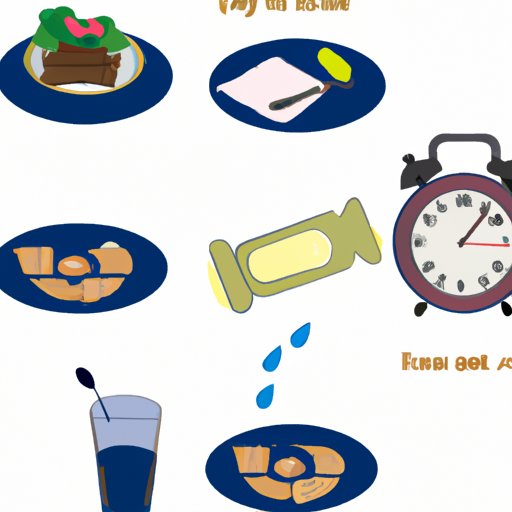Introduction
Eating and exercising are two essential components of a healthy lifestyle. But when it comes to timing your meals and workouts, is there an ideal gap between the two? In this article, we’ll explore the best time to exercise after eating and provide tips for optimizing your workouts by timing them with meals.
A Guide to Timing Your Workouts After Eating
Is there an ideal time gap between eating and exercising? The answer is yes — but it depends on what type of food you ate and when. Let’s take a look at what you need to know about working out after eating.
What is the Best Time to Exercise After Eating?
The amount of time you should wait to work out after eating depends on the type and size of the meal you’ve consumed. Generally speaking, if you’ve eaten a small snack, such as a piece of fruit or a handful of nuts, you can start exercising right away. However, if you’ve eaten a large meal, such as a burger and fries, it’s best to wait at least two hours before working out.
How Long Should You Wait Before Working Out After Eating?
According to Mike Roussell, Ph.D., a nutrition consultant and author of The Six Pillars of Nutrition, “If you’re eating something very light, like a banana or apple, you can probably exercise within 30 minutes. If you’re having something more substantial, like a sandwich, then you want to wait one to two hours.”
Dr. Roussell also notes that the timing of your workout can influence the types of foods you eat. For example, if you plan to exercise within an hour of your meal, he suggests eating foods that are low in fiber and fat so they can be digested quickly. On the other hand, if you plan to wait two hours or longer before exercising, he recommends eating a larger meal that contains both carbohydrates and proteins.

The Benefits of Waiting to Workout After Eating
Waiting to exercise after eating has several benefits. First, it gives your body time to digest the food, which can help prevent stomach cramps and nausea during your workout. Second, it gives your body time to absorb the nutrients from the food, which can give you more energy for your workout. Finally, waiting to exercise after eating can help ensure that your blood sugar levels remain stable during your workout.

Tips for Optimizing Your Workouts by Timing Them With Meals
In order to get the most out of your workouts, it’s important to time them with your meals. Here are some tips for pre- and post-workout meal timing:
Pre-Workout Meal Timing
If you plan to exercise within an hour of eating, it’s best to eat a light snack that contains carbohydrates and protein. Good options include a banana with peanut butter, a yogurt and granola, or a handful of nuts and dried fruit. Eating a light snack can help ensure that you have enough energy for your workout.
Post-Workout Meal Timing
It’s important to refuel your body after a workout, especially if you’re looking to build muscle. Aim to eat a meal that contains both carbohydrates and protein within two hours of finishing your workout. Good options include a turkey sandwich on whole wheat bread, a bowl of oatmeal with berries, or a hard-boiled egg and a piece of fruit.
Conclusion
When it comes to timing your workouts and meals, there is no one-size-fits-all approach. The best time to exercise after eating depends on the type and size of the meal you’ve consumed. Generally speaking, if you’ve eaten a small snack, such as a piece of fruit or a handful of nuts, you can start exercising right away. However, if you’ve eaten a large meal, such as a burger and fries, it’s best to wait at least two hours before working out. By timing your meals and workouts correctly, you can reap the benefits of both and maximize your performance.
For optimal performance, aim to eat a light snack before working out, and refuel your body with a meal containing carbohydrates and protein within two hours of finishing your workout. Following these simple guidelines can help ensure that you get the most out of your workouts.
(Note: Is this article not meeting your expectations? Do you have knowledge or insights to share? Unlock new opportunities and expand your reach by joining our authors team. Click Registration to join us and share your expertise with our readers.)
